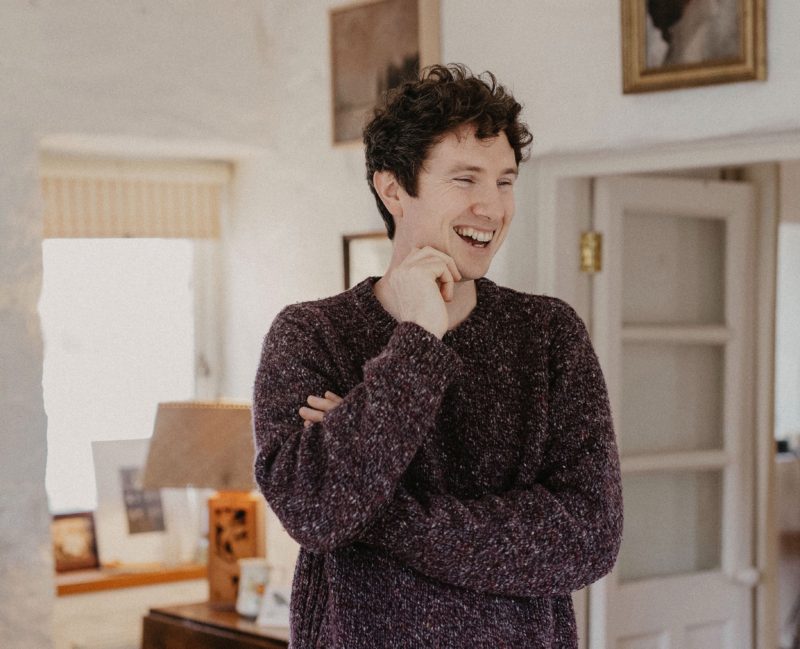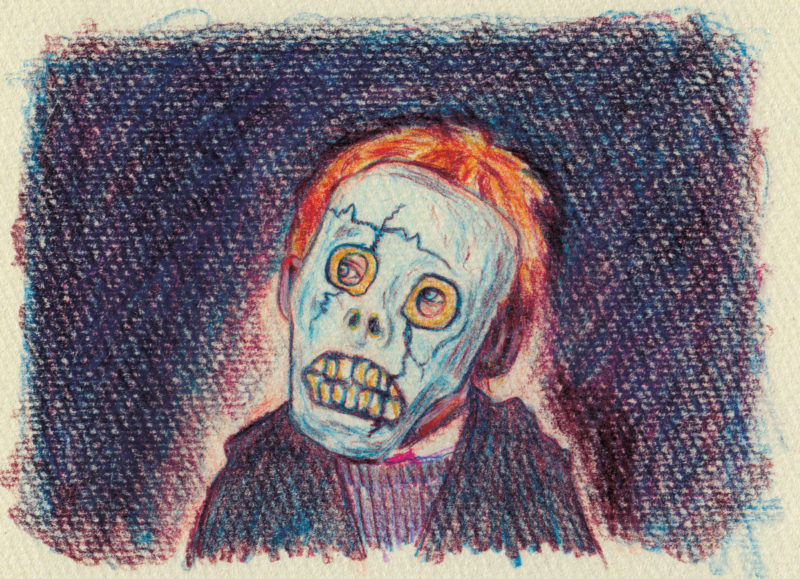
Ireland has a new cross-arts publication and production company – Holy Show. The magazine showcases a range of work from a range of mediums, such as theatre, visual art, film, dance and music.
The ethos and format of Holy Show encourages writers to engage with other art forms outside of literature, and provides a print platform for non-literary projects. The featured writers have collected stories from around the country that offer insight into contemporary Irish life and culture.
At times the magazine is wildly funny, while at other points it is achingly sensitive. Some of the stories have all the suspense of a Daphne Du Maurier novel, but the unique storytelling aspect of Holy Show makes it a wholly inclusive publication. Speaking to The University Times, Brendan Mac Evilly, the editor of Holy Show, says that reading the magazine “should feel like something between an entrancingly esoteric lecture and the best pub conversation you’ve ever had”.
I meet Mac Evilly on a Friday evening outside O’Neill’s on Pearse St. The pub is jammed with casual-Friday-clad young professionals, their glasses raised, toasting the end of another long week. With no room at the inn, we head off in search of an emptier spot. Brimming with suggestions for places we could try, Mac Evilly quickly exposes his love for pubs, or perhaps more accurately, his love for the kind of storytelling that the pub environment encourages and facilitates.
“Wherever you turn up, if you hang around long enough someone will talk to you or something will happen”, he offers. “If something doesn’t happen, you will find out that there is some weird history to this one particular area and you can write about that instead. If that’s not the story, then a conversation you have with the person you meet in the pub will be. For me, they are the ones I want to hear the most.”
Wherever you turn up, if you hang around long enough someone will talk to you or something will happen
Mac Evilly talks about the arduous process of coming up with a title that suited the relaxed but beautifully literary spirit of the publication. “I got the phrase Holy Show from the dictionary of Hiberno-English. I literally poured through it and that led to a long list. Then we got some people and, over a few pints, we went at it for a few hours.”
The pieces in Holy Show attest to the way in which storytelling as a form is likely to engage any reader, literary or non-literary. Mac Evilly wanted a name that provided a similar inclusivity. “I guess a lot of literary journals are quite earnest and serious, and I was hoping for it to be a bit less intimidating to a non-literary audience and to be a bit more playful and silly, so the name Holy Show worked for that.”
More generally in print culture, there seems to be an opening up of the landscape of collaboration between the literary and art worlds, and journals such as Paper Visual Art and online publications like Fallow Media exemplify this. Holy Show revels in the spaces where literary projects use other art forms as a point of reference and inspiration, and it wants to embrace and extend the capacity of this new territory. “There is very little in terms of print for every other art form”, says Mac Evilly. “I guess there is also very little to encourage writers to look outside the art form of literature, to collaborate with different artists, so that was maybe the impetus for the magazine.”

Mac Evilly speaks about continuing with this trajectory of collaboration for the second issue of the magazine: “I’m looking for projects that are in production, or in the process of being made, outside literature altogether and hoping to create a print platform for those projects.”
In keeping with spooky season, Roisín Kibred’s piece in the first issue of Holy Show is entitled “Halloween in Cavan, 1986”. The text, which is set among Claire Brankin’s beautiful illustrations, responds to video footage from the RTÉ archives. In the clip a reporter interviews children from Virginia National School in County Cavan. The school children reveal their devious plans for Halloween night, their hilarious schemes to throw eggs at windows, tear up neighbours’ gardens, pull gates from their hinges and let off stink bombs illicitly acquired from older siblings.
A lot of literary journals are quite earnest and serious, and I was hoping for it to be a bit less intimidating to a non-literary audience
The piece, in response to the archival footage, explores Samhain’s traditions and customs and epitomises the magazine’s exciting approach to working with other forms of media.
The magazine also includes passages from Ian Maleney’s book Minor Monuments, which was published by Tramp Press in 2019. On their website, holyshow.ie, you can find an atmospheric companion audio for Maleney’s piece. In addition to this, Holy Show Productions is touring a live audiovisual essay performance that will run in Dublin on November 15th and 16th in Project Arts Centre, before touring around arts centres and festivals around the country. The performance is produced in collaboration with filmmaker Jamie Goldrick and sets live readings to footage from the Irish midlands.
Holy Show Productions, which works in conjunction with the publication, offers a reimagining of the literary event. Mac Evilly explains: “The idea with the production thing would be to continue working with the writers but to see if they can work with stage professionals or people who work in other art forms or filmmakers, and see if we can put something together that’s more show-esque that creates an experience.”
He wants to explore the potential that exists beyond the conventional “two people in conversation or two people reading and then in conversation, or four people reading and then in conversation”.
He elaborates: “There will always be a place for going in and listening to someone read a short story in the pretty much dark from beginning to end and that can be a great experience if the story is good and if the performer is good but there is no one really doing anything beyond that.” Holy Show Productions is eager to reshape the conventional format of literary event.
Live performances of old seemed to be a wholly more interactive experience than the rigid performer–spectator dynamic you see in today’s theatres. In the 1800s, theatre goers would buy rotten fruit so that they would have something to pelt at villainous characters. Newspapers sported such headlines as “An Actor Demoralized by Tomatoes”.
Mac Evilly notes this change of dynamic: “My feeling about literature events is that there is a chance they can be boring and there can be a separation between the audience and the speakers. You are really relying on the warmth of the individual on stage.”
Holy Show Productions aims to bridge the gap between the audience and the performance with their new event model, which moulds together the familiar and relaxed pub-like atmosphere with an engaging show and distinct production value. “There is the way that you tell stories in a pub which is great, but what if you paid someone really well to really work on telling this quite local micro story.” Holy Show’s unique approach to multimedia publication promises to provide an exciting new path for Irish creatives.






